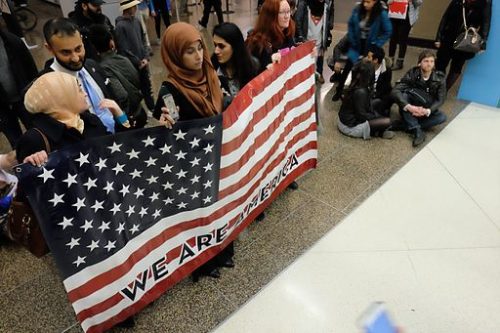
February 21, 2017; CNN Politics and New York Times
The U.S. Department of Homeland Security has released a series of memos and fact sheets detailing how the federal government plans to implement President Trump’s executive orders on immigration and border security.
The key point contained in the memos is that “ICE (Immigration and Customs Enforcement) will not exempt classes or categories of removable aliens from potential enforcement. All of those in violation of immigration law may be subject to immigration arrest, detention and, if found removable by final order, removal from the United States.” However, there will be priority placed on “several categories of removable aliens who have committed crime, beginning with those convicted of a criminal offense.”
The new guidance expands those subject to “expedited removal” to include people who can’t prove they have been living in the U.S. continuously for two years. Formerly, expedited removal only applied when an immigrant was arrested within 100 miles of the border and had been in the country no more than 14 days. The so-called “catch and release” protocol, where detained immigrants without legal status awaiting court proceedings are released pending court dates that may be years away, is being ended. “Parole into the United States will be used sparingly and only in cases where, after careful consideration of the circumstances, parole is needed because of demonstrated urgent humanitarian reasons or significant public benefit.” Exceptions may be made on a case-by-case basis for “parole for certain arriving aliens found to have a credible fear of persecution or torture.”
Two Obama-era executive actions, Deferred Action for Childhood Arrivals (DACA) and Deferred Action for Parents of Americans and Lawful Permanent Residents (DAPA) will be largely unaffected by the new DHS guidance. According to a Homeland Security official, “No. 1: None of this affects DACA. No. 2, none of this affects DAPA/expanded DACA.” The official, however, went on to note that expanded DACA is currently being blocked by the federal courts.
Some Obama-era safeguards remain in place, such as the restriction against enforcing immigration law in “sensitive locations” such as on church or school property.
Advocates on both sides of the immigration debate weighed in on the new DHS guidance.
Sign up for our free newsletters
Subscribe to NPQ's newsletters to have our top stories delivered directly to your inbox.
By signing up, you agree to our privacy policy and terms of use, and to receive messages from NPQ and our partners.
“The administration seems to be putting its foot down as far as the gas pedal will go,” said Heidi Altman, policy director for the National Immigrant Justice Center, a Chicago-based group that offers legal services to immigrants.
“The message is: The immigration law is back in business,” said Mark Krikorian, the executive director of the Center for Immigration Studies, which supports restricted immigration. “That violating immigration law is no longer a secondary offense.”
One fact included in the DHS memos that hasn’t been widely reported and might surprise Congress among others: DHS has already found money to begin building the border wall with Mexico without asking for a budget appropriation. “CBP (Customs and Border Protection) has identified funding to begin immediate construction and is working with the Administration in these efforts […] Initial construction of new infrastructure will focus on locations near El Paso, Texas; El Centro, California; and in Southern Arizona.” Just because immediate funding has been found does not mean that construction will begin right away, as the executive orders require DHS to survey and report on various factors affecting border wall construction, which may take several months.
Among the controversial provisions of the executive orders and new guidance is the use of state and local law enforcement resources to assist the federal government in immigration enforcement. There is provision in law for what is referred to as the 287(g) program, which “allows local law enforcement agencies to participate as an active partner in identifying criminal aliens in their custody, and placing ICE detainers on these individuals,” according to DHS.
“When you tell state and local police that their job is to do immigration enforcement,” said Omar Jadwat, director of the American Civil Liberties Union’s Immigrants’ Rights Project, “it translates into the unwarranted and illegal targeting of people because of their race, because of their language, because of the color of their skin.”
The New York Times notes that “Maricopa County in Arizona spent years defending its sheriff at the time, Joseph Arpaio, in federal court, where he was found to have discriminated against Latinos.”—Michael Wyland













